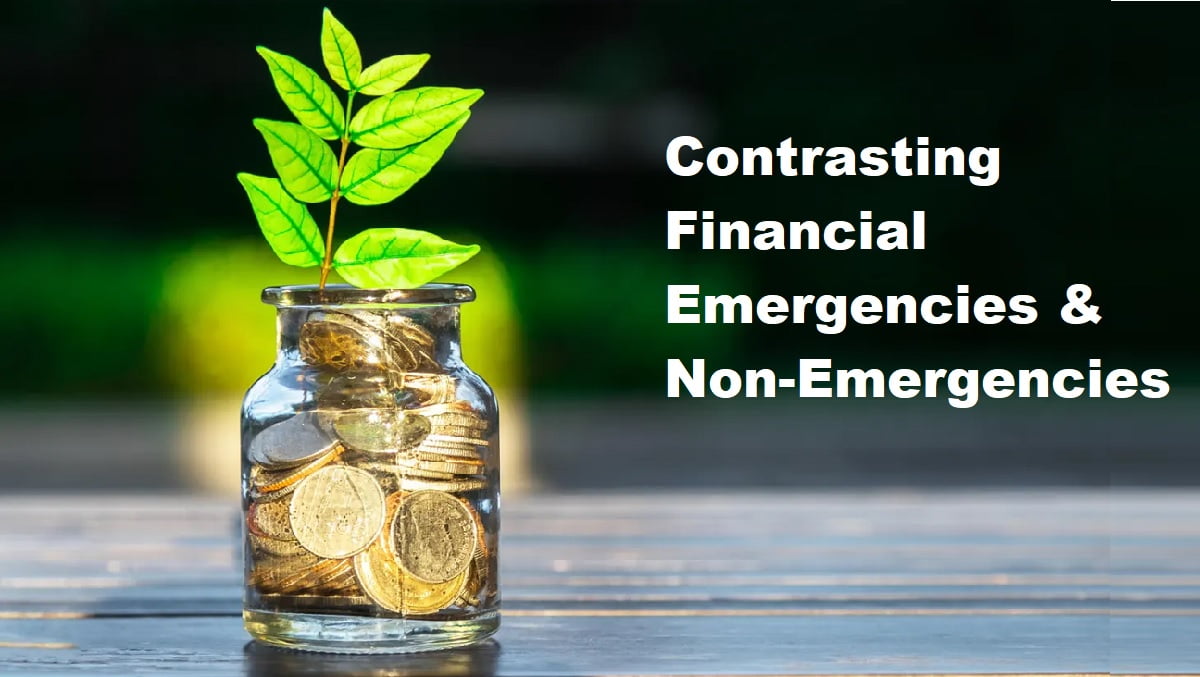Being able to distinguish between financial emergencies and non-emergencies is an important skill for managing personal finances responsibly. Knowing the difference can help you prioritize expenses, handle them appropriately, and work towards long-term financial stability.
Defining Financial Emergencies
A financial emergency is an unplanned, urgent situation that requires immediate action and financing. Some examples include:
Loss of income
Losing a job or having work hours/income drastically reduced unexpectedly qualifies as a financial emergency. This results in a loss of wages that are likely needed to cover regular living expenses.
Major home repairs
A financial emergency could arise from sudden home repairs like fixing a leaking roof, replacing a broken water heater, or repairing structural damage. These issues threaten the safety and livability of a home if left unaddressed.
Medical bills
Health emergencies that result in hospital bills, surgeries, or intensive treatments often become financial emergencies due to their high costs. Especially for the uninsured, medical debt can destroy financial security.
Characteristics of Financial Emergencies
Financial emergencies have a few defining characteristics:
Unplanned
By definition, emergencies cannot be predicted or scheduled for. This makes them hard to prepare for.
Require immediate action
Financial emergencies require quick action and financing, often within days or weeks. This is what distinguishes them from other expenses.
Threaten financial security
If left unaddressed, financial emergencies can have devastating and lasting consequences. They can rapidly deplete savings, cause bankruptcy, and destroy credit scores.
Defining Financial Non-Emergencies
On the other hand, non-emergencies are foreseeable expenses that do not urgently threaten financial stability. Some examples are:
Minor home repairs
Non-emergency home repairs include renovations, upgrades, and minor fixes. These projects can wait weeks or months before being addressed.
Vacations
Vacations are a discretionary cost. While nice to have, vacations are not essential expenses.
Upgrading technology
Purchasing new gadgets and devices is convenient but rarely urgent. Existing technology can continue being used.
Characteristics of Financial Non-Emergencies
Non-emergencies have characteristics that distinguish them from urgent situations:
Planned or expected expenses
Car maintenance, appliances wearing out, kids’ activities, etc. tend to be foreseeable. They happen but don’t surprise us.
Do not require immediate payment
Non-emergencies allow flexibility in when you address them. It’s fine to save up over weeks or months.
Will not severely impact the finances
While annoying, non-emergencies won’t critically damage financial health. Failing to buy new tech may disappoint but won’t threaten livelihood.
Key Differences
The key differences between financial emergencies and non-emergencies include:
Urgency
Emergencies require immediate attention; non-emergencies allow time for planning.
Consequences
Not addressing an emergency can have life-altering effects. Non-emergencies have minor impacts.
Planning
Emergencies arise unpredictably while non-emergencies can be anticipated and budgeted for.
Handling Each Type of Expense
It’s critical to handle financial emergencies and non-emergencies differently:
Emergency funds for emergencies
Savings should be earmarked for true emergencies only. Don’t tap emergency funds for vacations or minor expenses.
Budgeting for non-emergencies
Anticipated expenses should be worked into monthly budgets. Save a little each month so they can be paid out of pocket.
Prioritization
If money is tight, essential emergency expenses take priority over discretionary ones. Don’t go on vacation if the roof leaks.
Achieving Financial Stability
To withstand both emergencies and non-emergencies, stability requires:
Emergency savings
Build a rainy day fund with 3-6 months’ living expenses. This protects against income loss or costly crises.
Insurance
Insurance covers costly emergencies like health crises, home damage, and auto wrecks. It provides vital financial protection.
Debt reduction
Less debt means more cash flow flexibility to cover true emergencies when they strike.
Retirement savings
Consistently saving for retirement brings long-term stability against rising living costs and unexpected needs in later life.
In summary, separating financial emergencies from non-emergencies helps prioritize expenses appropriately. Handling each unique type of cost-effectively is key to maintaining financial health and stability. Avoid depleting emergency savings on minor expenses but also budget non-emergency costs into monthly spending. Achieving balance brings peace of mind.
FAQs
What are 3 examples of financial emergencies?
- Job loss
- Major home repairs like fixing a leaky roof
- Substantial medical expenses
What are 3 examples of financial non-emergencies?
- Minor home updates like remodeling a bathroom
- Vacations
- Upgrading phones when existing ones still work
How can you prepare for a financial emergency?
- Build an emergency fund with 3-6 months of living expenses
- Maintain insurance like health, home, and auto
- Reduce debts so more cash flow is available
How can you manage non-emergency expenses?
- Create a budget that anticipates known expenses
- Open a savings account for discretionary costs
- Delay minor purchases if money is needed elsewhere
What’s an example of prioritizing an emergency over a non-emergency?
- Paying for sudden medical treatment instead of a vacation
- Covering a broken water heater instead of buying a TV
- Repairing a leaky roof rather than remodeling a kitchen
Conclusion
Distinguishing between financial emergencies and non-emergencies involves evaluating the urgency, potential consequences, and predictability of expenses. This helps determine appropriate ways to handle them. Emergencies require immediate financing, often from rainy day funds, to prevent lasting financial damage. Non-emergencies can be planned for and budgeted out of monthly cash flow. Finding the right balance between addressing emergencies and planning for expected costs is essential for maintaining financial stability.
